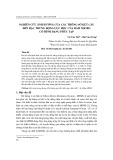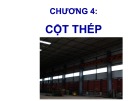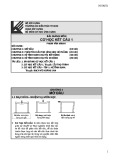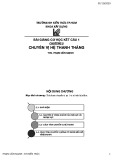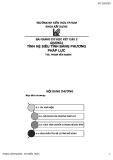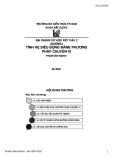
Journal of Science and Transport Technology Vol. 2 No. 3, 26-32
Journal of Science and Transport Technology
Journal homepage: https://jstt.vn/index.php/en
JSTT 2022, 2 (3), 27-33
Published online 29/09/2022
Article info
Type of article:
Original research paper
DOI:
https://doi.org/10.58845/jstt.utt.
2022.en.2.3.26-32
*Corresponding author:
E-mail address:
sonth@utt.edu.vn
Received: 03/08/2022
Revised: 26/09/2022
Accepted: 28/09/2022
Effect of weather aging on volume
expansion properties of steel slag
Son Hoang Trinh*
University of Transport Technology, Hanoi 100000, Vietnam
Abstract: Steel slag, one of the huge industrial waste sources, which has
many outstanding advantages (hardness, roughness, angularity, and abrasion
resistance) has been used as an aggregate in asphalt concrete to bring many
benefits. However, steel slag is rarely used in Portland cement concrete
because of concerns that it may give rise to volume expansion. One of the main
causes of this problem is that the steel slag contains a considerable amount of
free lime. This free lime content can be reduced if it is hydrated or the steel slag
is aged by water. Therefore, in this study, the effects of weather aging on
volume expansion properties of steel slag will be considered. The pH, free lime
and volume expansion tests were carried out on weather-aged steel slag
samples (after aged by 1 month, 6 months, 12 months and 30 months) and
compared with non-aged one. The results showed that the 6 month-aged, 12
month-aged, and 30 month-aged steel slag samples had low free content, low
pH and volume expansion. Additionally, the steel slag is stockpiled for more
than 6 months has relatively little volume expansion, meeting requirement of
ASTM D492 specifications for aggregate in concrete.
Keywords: Steel slag, volume expansion, pH, free lime, aging.
1. Introduction
Steel slag is a by-product of the steelmaking
process. The amount of released slag accounts for
about 15% of the volume of steel products [1]. In
Vietnam, it is estimated that about 1-1.5 million
tons of steel slag are discharged each year [2].
Different types of steel slag are formed that depend
on the ingredient and the furnace technology used.
Currently, in the world, steel is produced by two
main technologies: Basic Oxygen Furnace (BOF);
Electric Arc Furnace (EAF) [3]. Steel slag has a
darker gray color and higher unit weight than that
of natural crushed stone. Steel slag is usually
ground and sieved to a certain particle size.
Currently, steel slag is used as a granular material
for backfill, foundation, subgrade and aggregate for
concrete [4]. Due to its high strength, abrasion
resistance, stability and bonding, steel slag is often
used as aggregate of asphalt concrete for high-
grade pavements subjected high traffic volume [2,
5, 6]. Steel slag can be used as coarse and fine
aggregate for asphalt concrete. However, it is not
recommended to use 100% of both steel slag
aggregates because it often creates high porosity,
increases the bitumen content and reduces the
rutting resistance [7].
Although steel slag aggregate is commonly
applicated in asphalt concrete, it is rarely used in
cement concrete [1]. Several authors have carried
out some studies on the strength and durability of
Portland cement concrete using steel slag
aggregate [8–11]. The results have shown their
outstanding advantages in terms of compressive
strength, shrinkage when compared with Portland
cement concrete using conventional aggregates.
However, the volume expansion of steel slag that





